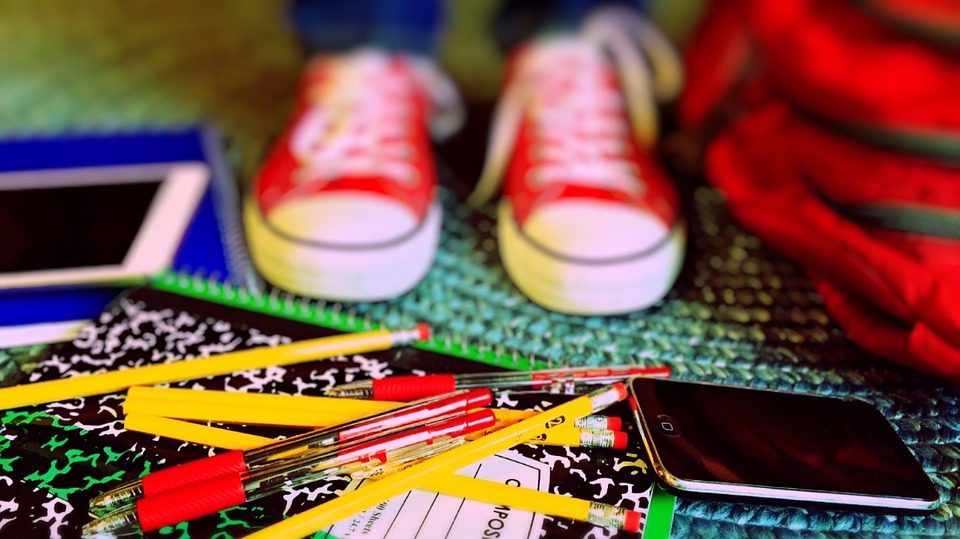by Dr. Eric McLaughlin, M.D. and Carlos I. Sosa —
Part I: Get off to a healthy start
With less than two weeks to go before your student(s) are back to school, the pressure is increasingly present to supply your child with the “latest” and “coolest” gear, from fashion to electronics. Although many of these “wants” may seem important in the short-run, consider some oft forgotten and possibly more important priorities for your back-to-school preparations checklist. Here are a few suggestions to start off a happy, healthy, and successful year. (Part I will focus on proactive and pre-matriculation suggestions, and Part II will discuss healthy habits and child safety.)

1. Schedule a sports physical: Be an early bird!
If your student athlete plans on participating in school sporting activities, find out what your school’s policies are regarding pre-participation sports physicals. These can be arranged through your primary care provider. Don’t put these off—make the appointment now as primary physicians are booked well in advance. Your school may also direct you to resources for low-cost and free physicals for athletes. Houston Independent School District has a website with forms, information, and eligibility requirements. http://www.houstonisd.org/domain/15304
2. Chat about cell phones: Curb your student’s ‘tweet’ tooth.
Your students have, at best, five hours of active instruction during the school day. This valuable time becomes less effective with the distraction of buzzing and vibrating electronic devices. Encourage your student to keep their phone locked up and put away from the morning bell until school’s out at the end of the day. Let your student know that you support the school’s policy on cell phone conduct. Both student and parent must resist the urge to communicate via cell phone except during allowable times. Most schools don’t allow students to use cell phones during school hours anyway, and students and parents can pay costly fines when chirps and ringtones reveal even the innocent offender. Additional information about children and cell phone use can be found at:http://www.healthychildren.org/English/family-life/Media/Pages/Cell-Phones-Whats-the-Right-Age-to-Start.aspx?
3. Update vaccines August is National Immunization Awareness Month
First and foremost, vaccines are safe and serious side effects are very rare. Like any other drug, vaccines are not without some risks. However, unlike other drugs, vaccines are held to extremely high safety standards since they are given to healthy individuals. Most side effects from vaccines are mild and self-limiting. Vaccines are the safest and most effective tool we have to protect your student, and all humans, against serious and sometimes fatal diseases like pertussis (whooping cough), measles, tetanus, hepatitis B, diphtheria, as well as others. For more information, see: http://www.dshs.state.tx.us/immunize/default.shtmhttp://www.aap.org/en-us/Pages/Default.aspx?
4. Choose the right backpack: A good fit = good health
Scrapes, bruises, and even more serious injuries from falling accidents are often attributed to outerwear and backpacks that are oversized or overstuffed. Remember to choose a backpack that fits your student comfortably and does not hang below the waistline. Trim excess length from the shoulder straps if necessary. 20% is the max: The weight of the pack shouldn’t exceed 20% of your student’s total body weight, and posture improves when both shoulders support the backpack as advised by the American Academy of Pediatrics. If your school allows, consider a rolling pack for heavier loads.
5. Check eyes and ears: Good sense for your child’s senses
As many as one in 20 children have vision problems in one or both eyes. And many children have undiagnosed hearing deficits that can lead to speech and language development delays. Generally, school requirements are that a child’s vision and hearing will be tested at 4 years of age, and again at Kindergarten, 1st, 3rd, 5th, and 7th grades. If a problem is detected, a pediatric ophthalmologist or audiologist may be consulted for corrective options. Corrective lenses have come a long way in being not only lightweight and flexible but also trendy in design. If your child needs corrective lenses, let them play a major role in choosing the style and color and they’ll be even more likely to keep them on in class. Finding and treating hearing problems early on can greatly improve your child’s chances of success. For more information, see: http://www.dshs.state.tx.us/vhs/require.shtm
Be sure to check back shortly for Part II of “back to school preparedness”. In part II, we will discuss some tips and suggestions for helping your students to develop and maintain healthy behaviors and habits that will further their success. In the meantime, check out the American Academy of Pediatrics website for additional information and back-to-school suggestions. http://www.aap.org/en-us/about-the-aap/aap-press-room/news-features-and-safety-tips/Pages/Back-to-School-Tips.aspx
